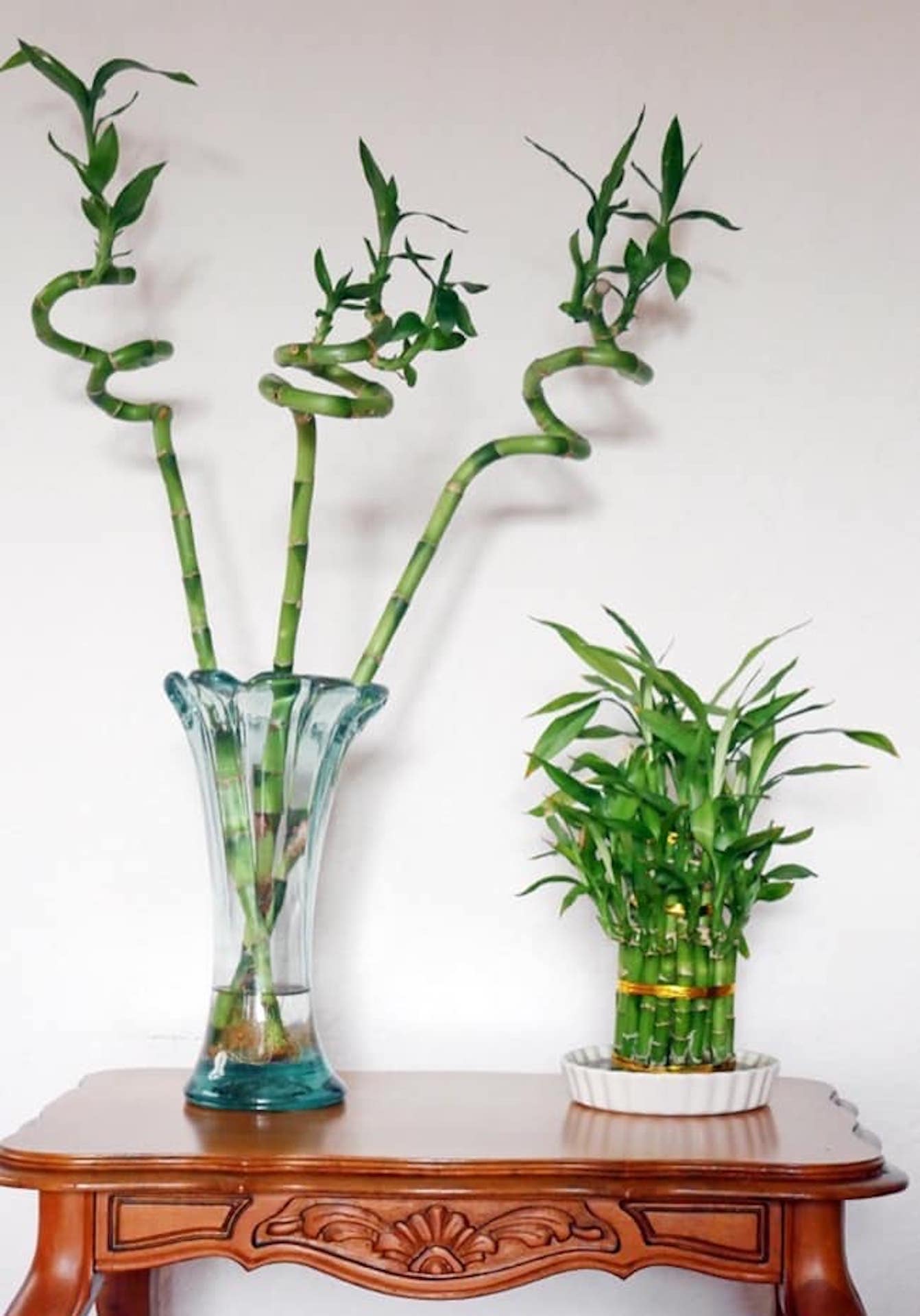Lucky bamboos are popular houseplants these days, but the ones with spiralling stems are certainly intriguing! Photo: joyusgarden.com
Most people would recognize a lucky bamboo if they saw one.
It’s a houseplant widely available in garden centers, florist shops, Asian grocery stores and even supermarkets, although not as popular as it was a few years ago. Essentially, it’s a Feng Shui-influenced way of enhancing the appearance of a rather ordinary dracena (Dracaena sanderiana), therefore not a real bamboo at all, presenting the plant with 9/10ths of its leaves ripped off, usually in a vase or little tray of stones and water rather than soil (the latter to slow its growth down as much as possible so the original look lasts a long time).
Lucky bamboos are produced by the millions in various Asian countries (China, Taiwan, Thailand, India, etc.) where they’re said to bring good luck. One lucky bamboo farm claims to produce over 9 million stems annually… and there are dozens of these growers.
I’ve written about the lucky bamboo a few times. Once an overall description and care guide: What is a Lucky Bamboo? and again on how to free one up and grow in it soil the way it really wants to be grown in the article Transplanting a Lucky Bamboo.

However, very often this plant is produced with a spiralling stem or even a braided one. You have to wonder how they do that. If so, read on.
Professional Method

Getting a dracaena to grow at odd angles is not done by pruning (well, not directly) or wiring (as in bonsai), but by exposing it to light from only one direction. Hey! It’s a plant and needs light, so it will obligingly, but very slowly, bend towards the source of light. That’s called positive phototropism.

Professional growers train their plants to spiral simply by placing the plant on its side. With the stem now horizontal, its tip will therefore start to turn towards the light above, producing new growth almost straight up. But after a few weeks, the growers turn the stems a bit clockwise (or counterclockwise). The plant then changes direction slightly, trying to straighten itself. This is then repeated regularly, slowly giving the plant a curved stem. For reasonably fast results, ideal conditions of warmth, moderate light, high humidity and careful fertilization are carefully maintained.
That’s a lot of precision work and growers must carefully calculate the moves they need to make, but they have become masters in the art of forcing the stem to form a sellable spiral.
Creating Your Own Spiral Bamboo
Growing a plant on its side is very awkward indoors. Soil spills out, proper watering a pot on its side is near to impossible, if you straighten up the plant in order to water it, you have to lay it down it down in exactly the right position, etc. It’s much easier to train a lucky bamboo plant to spiral with it standing upright, using the “open-sided box” method.
?? What follows is the method currently recommended by several Internet sources, including ProFlowers®. I’ve never tried it myself and have no intention of doing so: it takes far too much effort. Plus, you have to do it just right or your spiral will be very unequal. (Professional growers have the timing down pat and get it right every time.) And if you do try it, it will take (literally!) years to obtain a decent double spiral under home conditions. But even so, apparently some people do try it! So, if you’re very patient!
Materials

Essentially, all you need is a dracaena plant growing in a pot of soil (don’t even think of doing this with a plant growing in stones or water whose growth is already severely restricted!), a cardboard box and a bright window.
Why a bright window when it is well known that the lucky bamboo can tolerate low light? Because it barely grows at all under low light. If you want growth, you have to give the plant good light, including some direct sun.
Here’s what to do:
Creating a Lucky Bamboo Spiral Step by Step

- Cut the side panels off a cardboard box about twice as high as the plant.

- Place your potted plant inside the box.

- Set the box so it receives no light from above, but only from the open side.
- Care for your plant as usual until the plant starts leaning towards the light.

- Slightly rotate the plant, and it will adjust its angle and continue to grow towards the light.
- Keep rotating the plant in the same direction and the bend will eventually become a spiral.

- Finish up by removing most of the lower leaves, leaving only a tuft of greenery at the top, so the spiral is clearly visible.
- Show the plant off to impress your neighbors.
________________
Growing your own spiral lucky bamboo is quite a project and takes years. Might I suggest that if you like plants with spin in their stem, you simply go out and buy one already prepared?
Illustrations : laidbackgardener.blog

That is just too much work to ruin an otherwise good houseplant.
I sooo agree with you!
That’s the right amount of work to train a plant. I have an overgrown Lucky Bamboo that needs to be pruned and have the stalks rooted. I suppose spiralizing is their goal for another year
It seem funny to me, that Lucky Bamboo is not in the Bamboo Genus.
There are actually a couple of other plants people call bamboos, but really aren’t. Common names are like that: they appear to make things simpler, but they often make them more complicated.
I always wondered how they did that! (And, you had me at Spiral)! Haha! ????